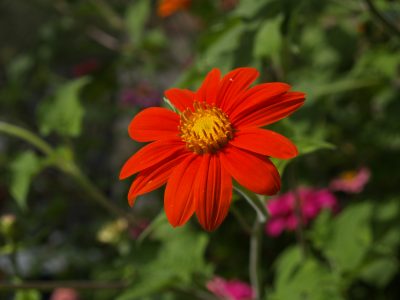Should I rake oak leaves off my beds or mulch over them?
Thanks to Robin Mayfield for this great question! She usually removes them, since she’s heard they don’t break down easily. Well, Robin, I’d say that leaving them is just fine. You’re correct that live oak leaves don’t break down easily, but that’s okay, if they’re serving as mulch.
My only caution is regarding the possibility of overwintering insects. If you noticed any sort of prolific insect infestation last year, such as caterpillars, I would suggest removing the leaf litter, and either composting it or recycling it curbside. But if you didn’t have any problems last year, it’s not likely that any overwintering insects that may be hiding in your leaf litter will pose enough of a problem to worry about. Especially since our winter was so dry.
Live oaks losing leaves early this year: Is this a problem?
I also got quite a few questions this winter about live oaks losing their leaves incredibly early this year, and whether this was due to the very early arrival of spring-like temperatures. Everyone’s live oaks were looking especially healthy at the time, so there was real concern about climate change.
But the unseasonably warm temperatures were not to blame; at least, not as they reflect the seasons. The early defoliation seen in otherwise healthy live oaks is not out of the ordinary. There are many things that could cause senescence and shedding of leaves, but our recent drought seasons have certainly played a leading role.
This may seem counter-intuitive, since the trees appear to be in excellent condition and not at all drought-stressed, but after many weeks without rain, even a healthy tree begins to prepare for a possibly bleak future. Leaves require water to support, and if there’s no water in sight, many trees will drop their leaves and go into dormancy until the stressful situation passes.
Other factors causing early defoliation include insect (mites, aphids, Cynipid wasps, etc.) and disease (rust, tar spot, & other fungal leaf spots) ailments. Healthy trees should tolerate these problems and recover from them.
DO keep your oak trees watered in these times of drought. Water at the dripline to 6″ and again when the soil is dry. A healthy tree is in better shape to combat natural combats on its leaves.

 Ragna Hersey
Ragna Hersey Amanda Moon
Amanda Moon Tropical Edibles
Tropical Edibles Daphne Richards
Daphne Richards